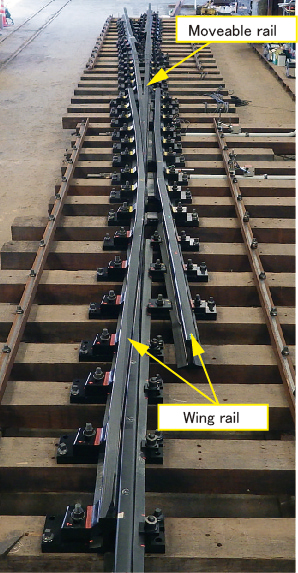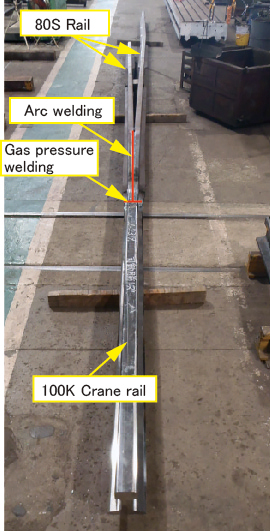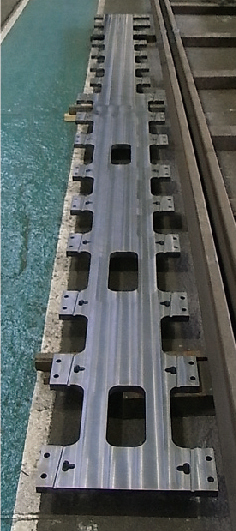1. Development of a rail steel moveable nose crossing for Shinkansen lines
- A thermal processing technique was developed for a rail steel movable nose crossing on a Shinkansen line.
- Verification was made to confirm that this method makes it possible to perform ultrasonic inspections in the same way as on ordinary sections except for a part.
The high manganese steel moveable noses used in Shinkansen turnouts can be run through at high speed, without slowing. However they are difficult to examine using ultrasonic testing, raising serious concern about the progression of internal damage. Consequently a moveable nose crossing which can be easily welded to the front and back connecting steel rails was developed, which can allow ulstrasonic testing (Fig.1).
The moveable nose crossing is made up of three components, namely the wing rail, the moveable rail and the one-piece cast base plate. The moveable rail comprises a 80S rail which is an arc welded forked rail gas pressure welded to a special cross-section 100K crane rail. The ends are profiled after the gas pressure welding (Fig.2). In order to reduce the initiation stress of the rail etc., the one-piece cast base plate is cut from a single sheet of steel and the rails etc. are then fixed onto this base (Fig. 3).
Switching tests were performed with the prototype turnout, confirming that the switching and initiating forces in the moveable rail were within tolerance levels. Regarding heat treatment which is used to increase anti-wear performance, a new method was developed to enable uniform hardening of the long moveable rail head by ensuring that the join with the non-hardened part of the rail was not formed in the rail head. Tests were also performed on the rail tread surface to imitate the operation of a rail fault detection vehicle using ultrasonic testing. Results confirmed that apart from the transfer and above the rod fixing parts, fault detection could proceed as on any other normal section of track.

Fig.1 View of whole crossing
Fig.2 Moveable rail
(before reprofiling of tip)
Fig.3 One-piece cast base plate